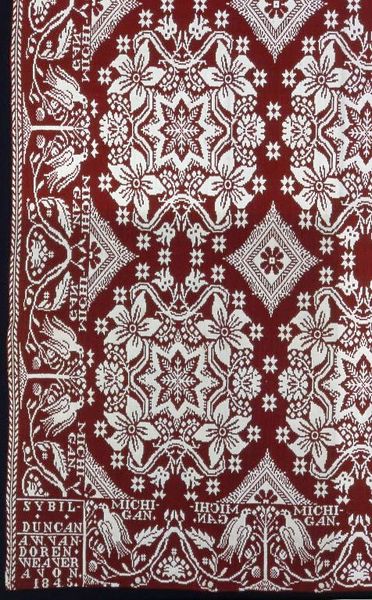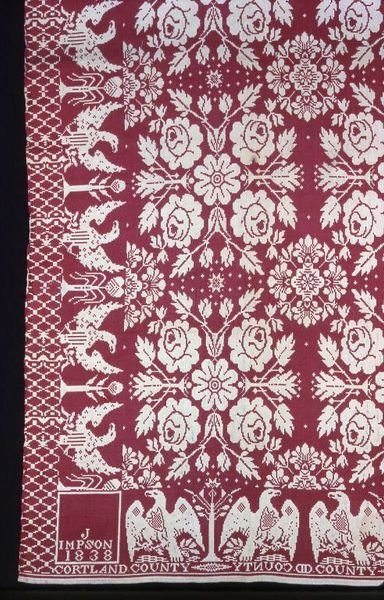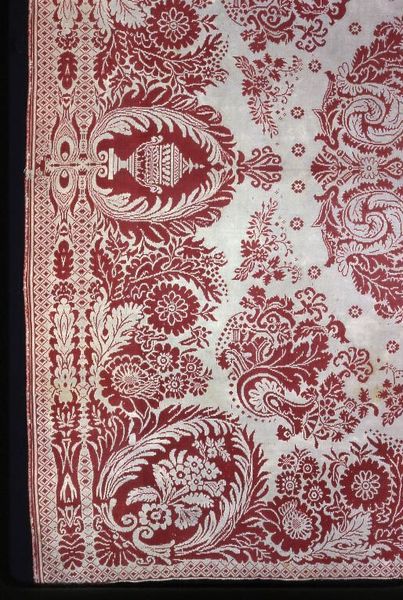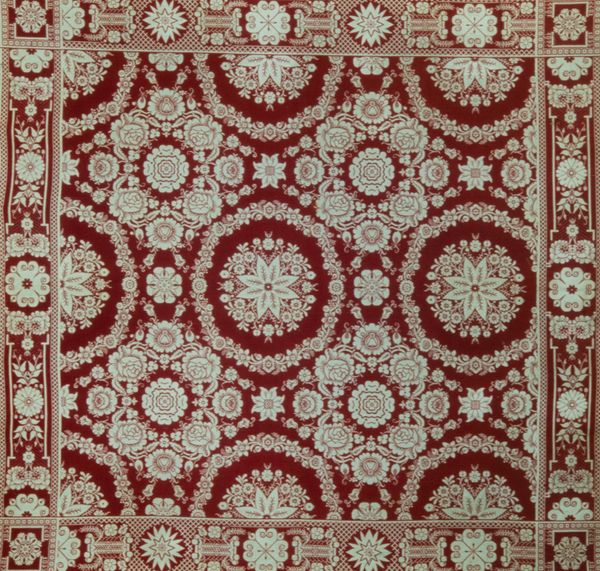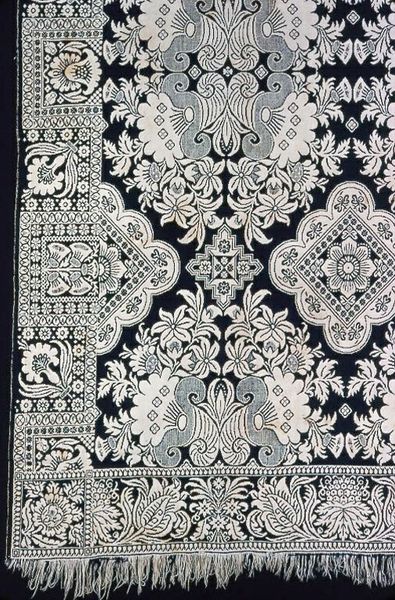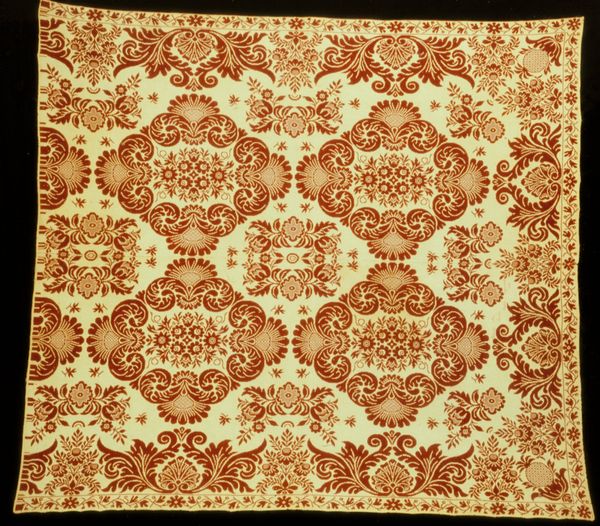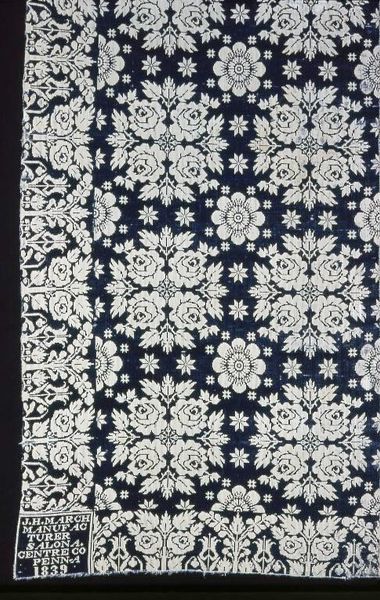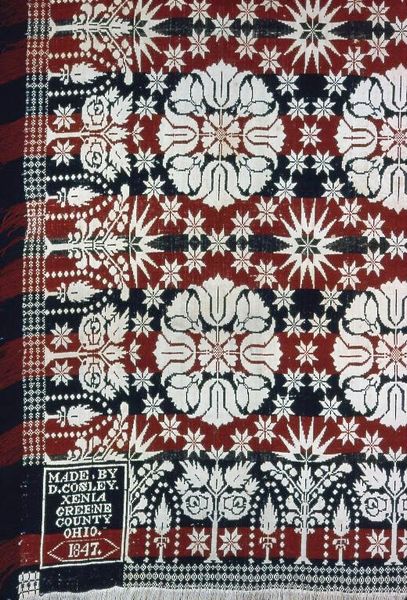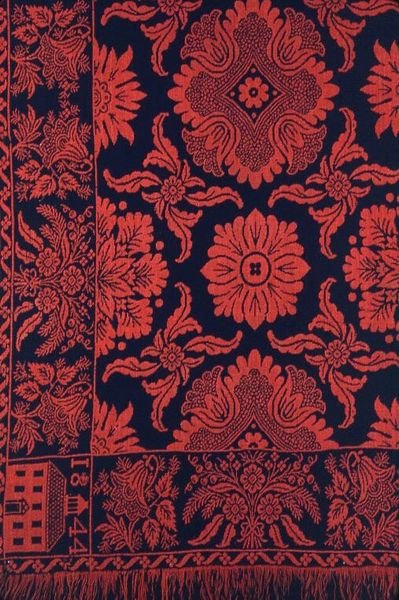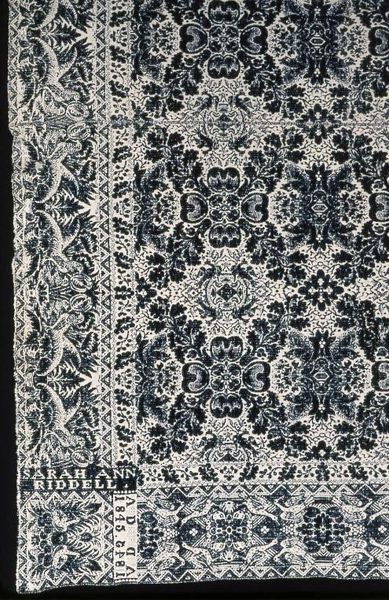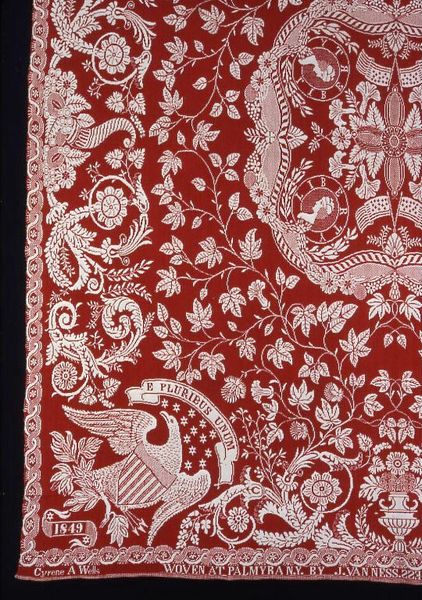
weaving, textile, cotton
#
organic
#
weaving
#
textile
#
geometric pattern
#
organic pattern
#
geometric
#
cotton
Dimensions: 222.5 × 198.7 cm (87 1/2 × 78 1/4 in.) Repeat: 91.25 × 41.25 cm (36 1/8 × 16 1/8 in.)
Copyright: Public Domain
Editor: So, this is a woven coverlet, made around 1841. It's currently at the Art Institute of Chicago and the artist is listed as Charlotte Purchase Thornton. It features these really interesting patterns – kind of a faded reddish-brown on an off-white background. The patterns have both floral and geometric elements, with even stylized birds nestled within the composition, and they're repeated in an orderly arrangement. I find the piece surprisingly elegant despite the simple colour palette. What do you see in this coverlet? Curator: Well, immediately I’m drawn to the materials and process. This coverlet wasn't created in a vacuum; the labor involved speaks volumes. Who wove this? Was it Thornton herself, or enslaved labor? The regularity of the pattern implies access to a loom and potentially pre-determined designs, pointing to specific economic and social structures of the time. Notice how this piece challenges a simple distinction between art and craft by turning the everyday material of a bedcover into something far more beautiful. Editor: That's fascinating! I was focusing on the aesthetic, but thinking about the labour and resources involved is eye-opening. Is there something inherently "materialist" about focusing on textiles like this? Curator: Absolutely. Textiles directly implicate production, distribution, and consumption. Where did the dyes come from? What was the fiber – wool, cotton, linen – and where was that grown or produced? The act of covering oneself with such an object implies an intimacy linked to a much wider social and economic network. Understanding that changes our understanding of design! Editor: I’ve never thought about textiles that deeply. It seems like I should be questioning assumptions on class and labor that art objects may obscure. Thanks for expanding my vision! Curator: Precisely! Considering how a work's materials and manufacture relate to a greater understanding of human culture provides crucial context to our experience.
Comments
No comments
Be the first to comment and join the conversation on the ultimate creative platform.
